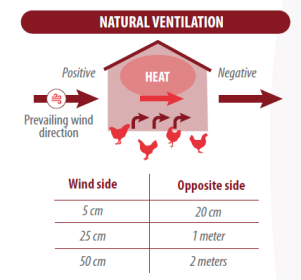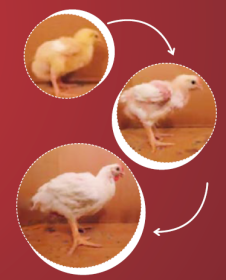
Management & Welfare
COBB-VANTRESS Highlights Winter Management Strategies To improve Broiler Performance – Part 1
To read more content about aviNews International December 2023
Management & Welfare
To read more content about aviNews International December 2023
Cobb-Vantress specialist José Luis Januário lists the most important tools for more effective management on cold days.
Winter can be challenging for the poultry industry. Efforts in management must be increased when faced with harsh weather. Moreover, is the farm prepared and ready? Are equipment and infrastructure present and ready to overcome the weather challenges?

These become frequent topics at this time of the year. Do you know which tools are the most important to employ?
INSULATION AND HOUSE SEALING FOR BROODING
To reduce temperature fluctuations, build a brooding chamber with a mini-tent that has a false ceiling, from eave to eave. The false ceiling will reduce the heat loss, total heating space, and improve insulation.
The double curtain should be installed with the correct tension. The internal curtain should completely seal from the floor to ceiling and open from the top, never bottom. The external can open with a slight gap at the ceiling (Image 1).
The curtain must never be opened from the bottom during brooding. Even small air movement from the bottom will make the chicks cold.
The colder, denser and heavier air must mix with the warm and less dense air that accumulates in the ceiling of the brooders. This cold air must be warmed before dropping to bird level without high velocity.
Conventional positive pressure ventilation, which the vast majority of houses in South America use, have good results in cold weather because double curtains can be used to ventilate minimally and prevent heat loss in the brooder.

Figure 1. A side curtain opening scheme. Opening the predominant wind side 4 times less than the opposite side creates positive inlet pressure which pulls air through the house.
Systematically opening the internal and external curtains to adjust temperature and air flow is an important management task.
A mechanical control system can be used to open and close the curtain. Automating the curtain adjustment is more efficient than manual operation and usually responds faster to prevent big temperature changes.
USING INLETS TO VENTILATE HOUSES
All cold air must enter through inlets installed as close to the ceiling as possible. Inlets use negative static pressure to pull fresh air into the house.

Cold, moist air is pulled into the house and mixes with warmer, drier air at the ceiling. This fresh, warmed air, then falls below to bird level.
Managing the inlets correctly will keep moisture low and air quality high in the house.
Humidity is the greatest challenge to manage with winter ventilation.
Depending on the age of the parent stock, young broilers will slowly change from “cold blooded” to “warm blooded” at around day 5. At this age, chicks can regulate their body temperature, but in suboptimal climate conditions, this will require energy.
Energy diverted to thermoregulation will not be available for growth and immune functions making chicks more susceptible to disease challenges and reduced weight gains.

Image 2. Images of birds at 3, 13 and 33 days. Birds need an external heat source until feathering is complete.

Graphic 1. R value of chicken feathering relative to age. Source: Professor Brian Fairchild- UGA 2019.
Ideally, the floor under the bedding material should be 28 °C, and the surface of the bedding above 32 °C. Bird behavior will indicate if the environment is comfortable for the flock.
From hatch to day 5, the target body temperature is 40° to 40.6 °C. As the birds age, house temperature will decrease as shown in Figure 2.
References upon consultation of the author.
Read the second part of the article in the next edition.